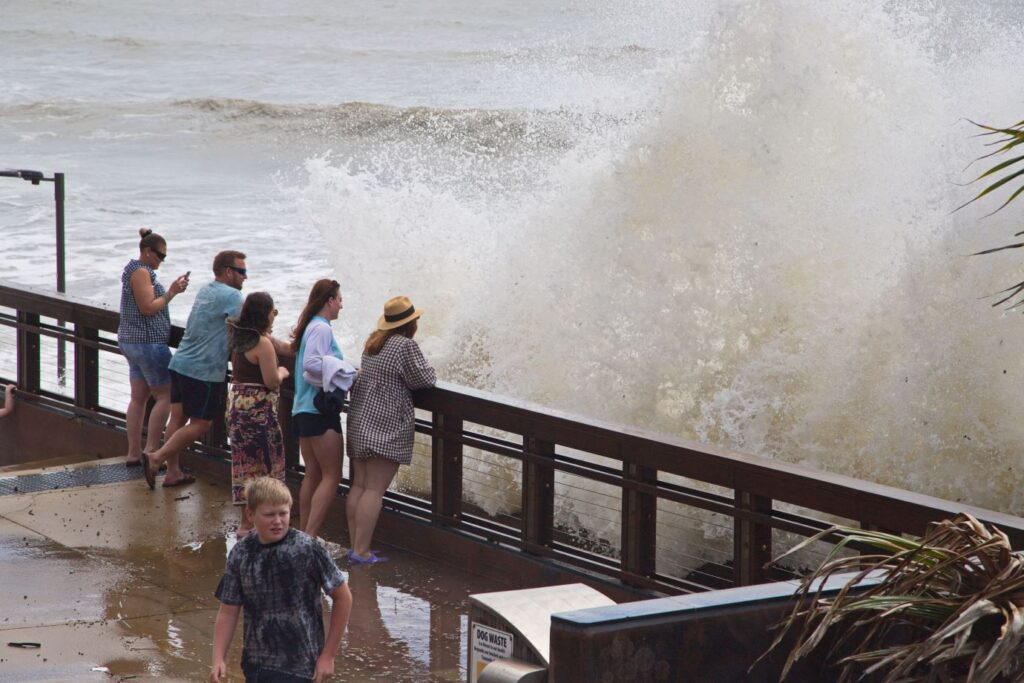Three and a half years ago, my partner and I left Sydney on a big adventure, moving to the beautiful Northern Rivers to grow our family. It was the middle of the pandemic and priorities had been sharply focused. We loved Sydney, but we needed more space, more nature, more calm. We chose the little town of Pottsville between the Gold Coast and Byron Bay as our new home.
And while it took a little while to properly acclimate, to find our footing and our friends, it really wasn’t long before Pottsville felt like home.
Anyone who’s lived here knows that the community in the Northern Rivers is truly special. People look out for one another. Neighbours are good mates. AWOL pets are brought home personally. We rally during crisis.
And that was never more apparent than during the last flood event in 2022 in which whole neighbourhoods were decimated and the locals were the first responders. In some of the hardest hit regions like Lismore and Murwillumbah, people used their tinnies to ferry supplies to one another and to help vulnerable people out of wrecked homes. Animals were rescued and safe homes were opened up to anyone who needed a warm bed.
The locals mobilised far quicker than the authorities.
And here we are again. Another climate crisis, with Cyclone Alfred teasingly approaching this week, and the community the first to stick their necks out.
I, perhaps foolishly, came to Sydney earlier this week for work. I thought I’d be able to make it back in time but it’s clear that Alfred had other plans.
While I sit here feeling helpless, my family have already evacuated. The offers from friends to stay have been pouring in, just as they did in 2022. People are opening up their homes, offering spare rooms and couches. On our local community pages, there are messages every few minutes: ‘I have space for two people and pets,’ ‘We have a generator and can store cold food,’ ‘Can anyone help move furniture to higher ground?’
This is the Northern Rivers spirit. When crisis hits, no one is alone. But as the waters rise, and as we once again bear witness to a region in distress, the frustration is palpable. Because this isn’t just an isolated event—it’s part of a pattern.
My home sits just 200 meters from the creek that feeds into the ocean. It will likely flood. It’s only a matter of how high the water will get. The floodwaters are rising, and with tidal surges expected, the situation is precarious. Power and water have already been cut off to 12,000 homes, with no indication of when they’ll return. Emergency services are stretched thin.
We hear the naysayers: ‘This isn’t a climate event; cyclones have always happened.’ But the severity of these rainfall events, the sheer volume of water dumped in such a short period—this is different. This is climate change in action. Warmer ocean temperatures mean more moisture in the air, which means heavier rainfall. It means events like this are not only going to keep happening, they’re going to get worse. And the science has been telling us this for decades.
Yet, in Australia, it feels like climate action has taken a backseat. Just when we should be ramping up efforts to build resilience, strengthen infrastructure, and cut emissions, we’re watching leaders hedge their bets, prioritising short-term gains over long-term sustainability.
In an election year, it’s time to demand more. We need leaders who take the climate crisis seriously, who understand that disaster recovery isn’t enough—we need prevention. We need investment in flood mitigation, in community-led resilience programs, in policies that put people before profits. We need climate action, not just climate response.
The Northern Rivers may be special, but it’s also under siege. And unless we act now, unless our governments step up with the urgency and scale this crisis demands, we will keep reliving these disasters. Again and again and again.


